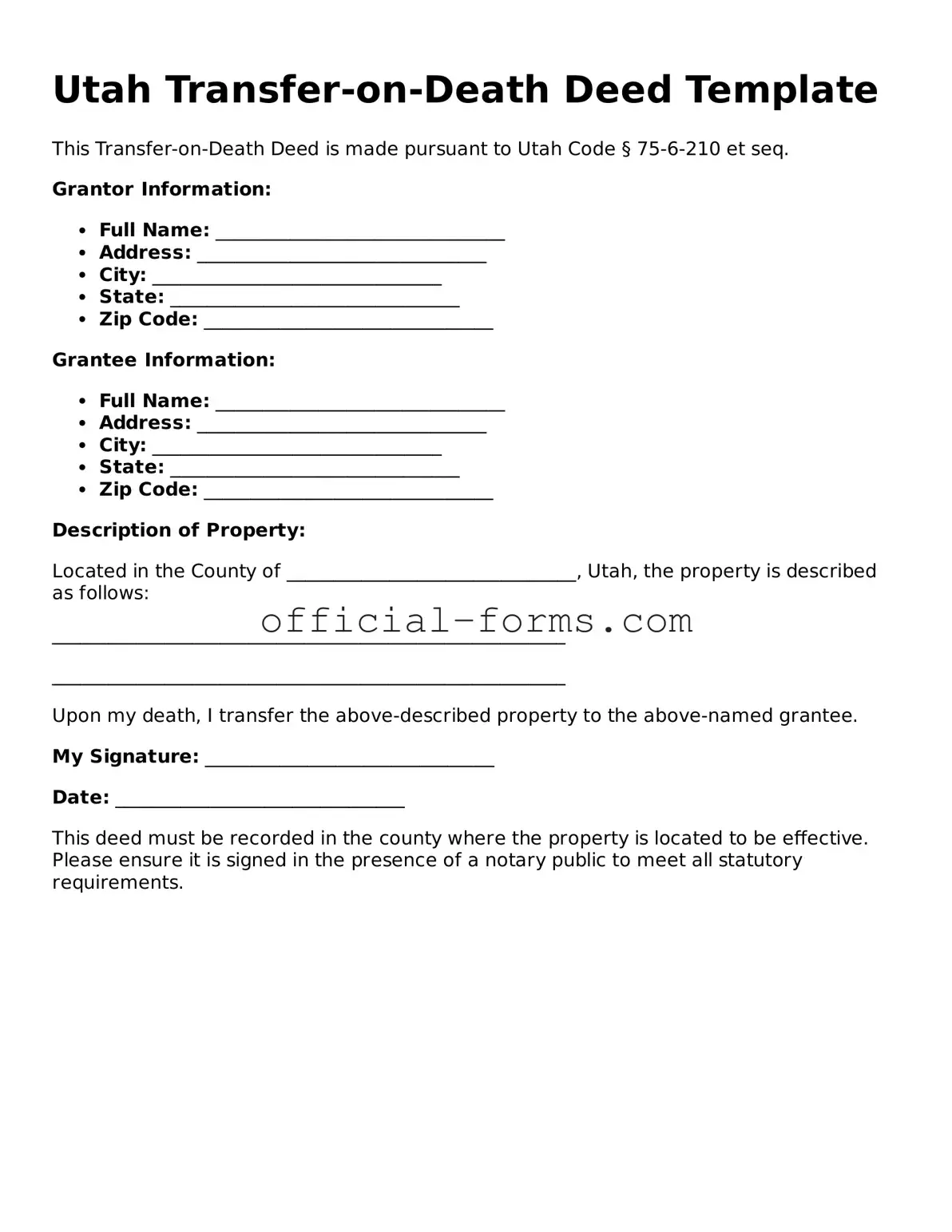Official Utah Transfer-on-Death Deed Document
The Utah Transfer-on-Death Deed form is a legal document that allows property owners to transfer their real estate to designated beneficiaries upon their passing, bypassing the often lengthy probate process. This tool provides a straightforward way to ensure that your property goes to the intended heirs without the complications that can arise from a will. Understanding how to properly use this form can simplify estate planning and provide peace of mind for you and your loved ones.
Open My Transfer-on-Death Deed Now
